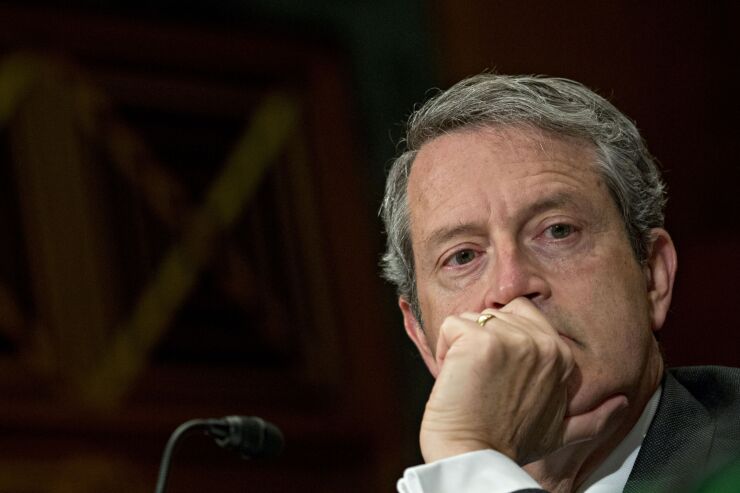WASHINGTON— A top Federal Reserve official dealt a blow to the central bank’s consideration of a digital dollar Monday, questioning whether the benefits of a Fed-backed digital currency would outweigh the costs.
Fed Vice Chairman for Supervision Randal Quarles called the benefits of a central bank digital currency “unclear,” and said that a digital dollar could actually “pose significant and concrete risks,” potentially undermining the U.S. banking system.
“An arrangement where the Federal Reserve replaces commercial banks as the dominant provider of money to the general public could constrict the availability of credit, fundamentally alter the economy and expose the public to a host of unanticipated, and undesirable, consequences,” Quarles said in a speech at the Utah Bankers Association Annual Convention.
In the speech, in which he noted that he was speaking only for himself and not the Fed’s board of governors, Quarles also cast doubt on whether a digital dollar could effectively expand financial inclusion as many of its proponents have argued.

Instead, he proposed that the solutions to financial inclusion lie within the existing banking system.
“I believe we can promote financial inclusion more efficiently by taking steps to make cheap, basic commercial bank accounts more available to people for whom the current cost is burdensome,” he said.
The Fed has been considering the idea of a central bank digital currency for years, but its focus has intensified as cryptocurrencies like bitcoin have experienced a surge in popularity. Fed Chair Jerome Powell said in May that the central bank
Many expect that paper to be a precursor to a decision from the Fed on whether to move forward with developing a central bank digital currency. However, Powell and other Fed officials have said that the Fed would not issue a digital dollar — or even test the concept through a pilot program —
That could prove to be challenging, especially if Capitol Hill Republicans adopt stances similar to that of Quarles. Sen. Pat Toomey of Pennsylvania, the ranking Republican on the Senate Banking Committee,
“We don’t need a state-sponsored bank interfering with this successful free-enterprise system,” he said.
Quarles appeared to sympathize with Toomey in Monday’s speech.
“Among other potential problems, a dominant CBDC could undermine the consumer and other economic benefits that accrue when commercial banks compete to attract customers,” he said.
Quarles also knocked the idea that a Fed-issued digital dollar could potentially enable users to take advantage of certain innovations now available with private cryptocurrencies, such as programming payments related to smart contracts.
“I am puzzled, however, as to how a Federal Reserve CBDC could promote innovation in a way that a private-sector stablecoin or other new payment mechanism could not,” he said. “It seems to me that there has been considerable private-sector innovation in the payments industry without a CBDC, and it is conceivable that a Fed CBDC, or even plans for one, might deter private-sector innovation by effectively ‘occupying the field.’”
He also expressed concern about how much a central bank digital currency could cost the Fed. There are no estimates for how much it would cost the U.S. to set up a digital dollar, but the total would likely vary widely depending on how the Fed would decide to create and use a central bank digital currency.
“We will need to consider whether the potential use cases for a CBDC justify such costs and expansion of the Federal Reserve’s responsibilities into unfamiliar activities, together with the risk of politicization of the Fed’s mandate that would come with such an expansion,” Quarles said.





